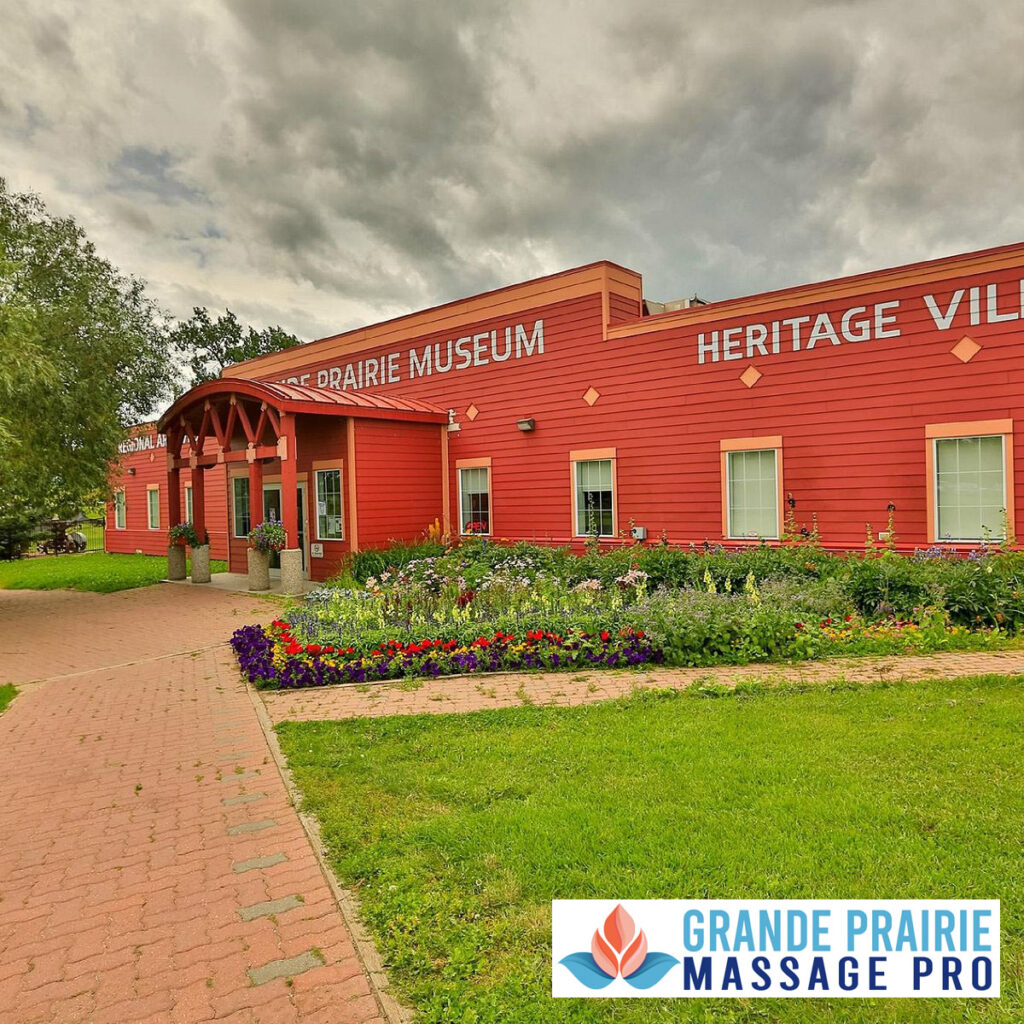Visit Grande Prairie Museum & Heritage Village in Grande Prairie, Alberta
 The County of Grande Prairie No. 1. Grande Prairie, located in the northwest part of Canada’s Peace River Country region, is a city. It is approximately 456 km (or 283 mi) north of Edmonton at the intersection of Highway 43, part of the CANAMEX Corridor, and Highway 40 (the Bighorn Highway).
The County of Grande Prairie No. 1. Grande Prairie, located in the northwest part of Canada’s Peace River Country region, is a city. It is approximately 456 km (or 283 mi) north of Edmonton at the intersection of Highway 43, part of the CANAMEX Corridor, and Highway 40 (the Bighorn Highway).
Grande Prairie, Alberta’s seventh-largest municipality, was home to 63,166 people in 2016. It was also one of Canada’s fastest-growing communities between 2001 and 2006. Grande Prairie’s population grew by 1.09% annually and 4.95% over the past five years. It has a current population of 75,106. (2021)
Because of its proximity to the migration route, and summer nesting areas of the trumpeter Swan, the city adopted the trumpeter, Swan, as its official symbol. Grande Prairie is often called the “Swan City” because of this nickname. Due to the discovery of dinosaurs in areas north and west of Grande Prairie.
The 2016 Census of Population by Statistics Canada showed that Grande Prairie had 63.166 people living in 23,676 of its 26,204 residential dwellings. This is a 13.5% increase from the 55,655 population of 2011. It has a total area of 132.73km2 (51.25 sq miles) and a population density 475.9/km2 (1,232.6/sq mile) in 2016.
HIstory
Grande Prairie is on the traditional territory of the Dane-zaa. In the early 1800s, the Dane-zaa started trading with the North West Company at Dunvegan on the Peace River. Samuel Black, a trader, was the first to mention the prairie in 1824. George Kennedy, 21 km northwest from the city, established Grande Prairie, a Hudson’s Bay Company trading station called Grande Prairie, in 1881.
In 1909, 17 townships were surveyed to allow homesteading. A land rush followed. Many settlers came from Edson via the rough wagon trail, which opened in April 1911. Grande Prairie had a bank and a hotel by 1912. Grande Prairie was a district metropolitan area with these services. It was incorporated as a village in 1912. The Edmonton, Dunvegan, and British Columbia Railway terminus was established in the town in 1916. Grande Prairie was established in 1919 by more settlers.
Grande Prairie Museum & Heritage Village
Grande Prairie Museum and Heritage Village are located in Muskoseepi Park, Grande Prairie. They tell the story of the region’s history. The Grande Prairie Museum contains everything you need, including early pioneers, Indigenous peoples, and railways. The Museum is located in Muskoseepi Park, at 102 Street and 102 Avenue.
Grande Prairie Museum was established in August 1970 to preserve the region’s pioneer history. The Museum’s total collection includes approximately 55,000 items.
It is accessible to all ages and offers high accessibility. The galleries include both permanent and temporary exhibits. They also feature prehistoric times, the Peace Region’s first homesteads, and current times.
The Isabel Campbell/Mel Rodacker Gallery has rotating exhibits throughout each year.
The South Peace Regional Archives (SPRA) are also housed in the Museum. They were established in 2000 and have been available to answer any of your genealogical or historical questions.
The adjacent Heritage Village is open from May to September, weather dependent. It features replicas of heritage structures and equipment that will give visitors a better understanding of the past.
For more information, visit their website.

